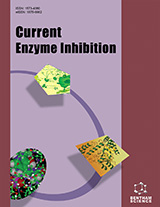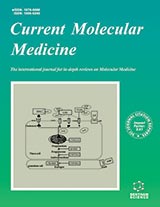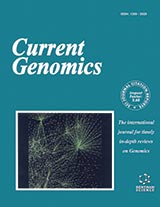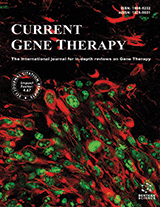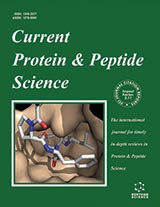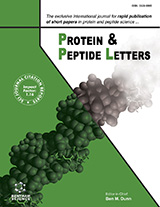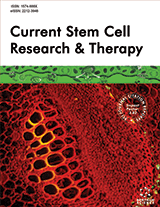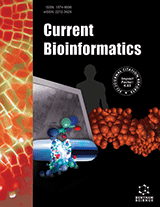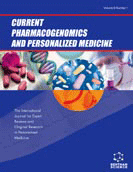Abstract
Since cell death by apoptosis is critical for the maintenance of tissue homeostasis, dysregulation of the cells intrinsic death program may promote tumor formation and progression. In addition, most anticancer therapies used in clinical oncology primarily act by triggering apoptosis in cancer cells. Therefore, defects in apoptosis programs, for example aberrant expression of antiapoptotic proteins, may render cancer cells resistant to current treatment approaches. “Inhibitor of Apoptosis Proteins” (IAPs) are expressed at high level in many human cancers and block apoptosis at a central point by binding to and inhibiting effector caspases. Thus, strategies that target IAPs, e.g. antisense approaches or small molecule inhibitors, open new perspectives to either directly trigger apoptosis in cancer cells or to restore sensitivity for apoptosis induction by cytotoxic therapies.
Keywords: ”Inhibitor of Apoptosis Proteins“ (IAPs), homeostasis, anticancer therapies, oncology, cancer cells, antiapoptotic proteins, NMR - Screening, XIAP antagonists
Current Signal Transduction Therapy
Title: Bypassing Cancer Resistance by Antagonizing “Inhibitor of Apoptosis Proteins” (IAPs)
Volume: 3 Issue: 3
Author(s): Simone Fulda
Affiliation:
Keywords: ”Inhibitor of Apoptosis Proteins“ (IAPs), homeostasis, anticancer therapies, oncology, cancer cells, antiapoptotic proteins, NMR - Screening, XIAP antagonists
Abstract: Since cell death by apoptosis is critical for the maintenance of tissue homeostasis, dysregulation of the cells intrinsic death program may promote tumor formation and progression. In addition, most anticancer therapies used in clinical oncology primarily act by triggering apoptosis in cancer cells. Therefore, defects in apoptosis programs, for example aberrant expression of antiapoptotic proteins, may render cancer cells resistant to current treatment approaches. “Inhibitor of Apoptosis Proteins” (IAPs) are expressed at high level in many human cancers and block apoptosis at a central point by binding to and inhibiting effector caspases. Thus, strategies that target IAPs, e.g. antisense approaches or small molecule inhibitors, open new perspectives to either directly trigger apoptosis in cancer cells or to restore sensitivity for apoptosis induction by cytotoxic therapies.
Export Options
About this article
Cite this article as:
Fulda Simone, Bypassing Cancer Resistance by Antagonizing “Inhibitor of Apoptosis Proteins” (IAPs), Current Signal Transduction Therapy 2008; 3 (3) . https://dx.doi.org/10.2174/157436208785699686
| DOI https://dx.doi.org/10.2174/157436208785699686 |
Print ISSN 1574-3624 |
| Publisher Name Bentham Science Publisher |
Online ISSN 2212-389X |
 1
1
- Author Guidelines
- Graphical Abstracts
- Fabricating and Stating False Information
- Research Misconduct
- Post Publication Discussions and Corrections
- Publishing Ethics and Rectitude
- Increase Visibility of Your Article
- Archiving Policies
- Peer Review Workflow
- Order Your Article Before Print
- Promote Your Article
- Manuscript Transfer Facility
- Editorial Policies
- Allegations from Whistleblowers
- Announcements
Related Articles
-
Heat Shock Proteins in Cancer: Signaling Pathways, Tumor Markers and Molecular Targets in Liver Malignancy
Protein & Peptide Letters Recent Progress in Discovery and Development of Antimitotic Agents
Anti-Cancer Agents in Medicinal Chemistry The Stroke-Induced Blood-Brain Barrier Disruption: Current Progress of Inspection Technique, Mechanism, and Therapeutic Target
Current Neuropharmacology The Potential Role of Pharmacogenomic and Genomic in the Adjuvant Treatment of Early Stage Non Small Cell Lung Cancer
Current Genomics <i>In Vitro</i> Characteristics of Glioma Cells Targeting by OX26-modified Liposomal Cisplatin
Letters in Drug Design & Discovery Synthetic Lethality to Overcome Cancer Drug Resistance
Current Medicinal Chemistry Neuropilin Signalling in Vascular Development and Pathology
Current Angiogenesis (Discontinued) Blood Brain Barrier in Hypoxic-Ischemic Conditions
Current Neurovascular Research Epigenetic Regulation of Cytochrome P450 Enzymes and Clinical Implication
Current Drug Metabolism Combinatorial Application of Nucleic Acid-Based Agents Targeting Protein Kinases for Cancer Treatment
Current Pharmaceutical Design Development of Crystalline Cellulosic Fibres for Sustained Release of Drug
Current Topics in Medicinal Chemistry Disintegrins from Snake Venoms and their Applications in Cancer Research and Therapy
Current Protein & Peptide Science Exosomes: A Promising Factor Involved in Cancer Hypoxic Microenvironments
Current Medicinal Chemistry Roles of EGFR, PI3K, AKT, and mTOR in Heavy Metal-Induced Cancer
Current Cancer Drug Targets Dissecting the Mechanisms of Thrombogenesis and Atherosclerosis for Neurodegenerative Disorders
Current Neurovascular Research Rational Drug Development Using Gene-Targeted Agents and Their Application in Anti-Gene Radiotherapy
Current Genomics Anti-glioma Effects of Caffeic Acid Phenethyl Ester and Dasatinib Combination Therapy in an in vivo Rat Glioma Model
Anti-Cancer Agents in Medicinal Chemistry The CXCL12/CXCR4 Axis as a Therapeutic Target in Cancer and HIV-1 Infection
Current Medicinal Chemistry Human Immunodeficiency Virus-Mononuclear Phagocyte Interactions:Emerging Avenues of Biomarker Discovery, Modes of Viral Persistence and Disease Pathogenesis
Current HIV Research Cancer Pharmacogenetics: The Move from Pharmacokinetics to Pharmacodynamics
Current Pharmacogenomics







